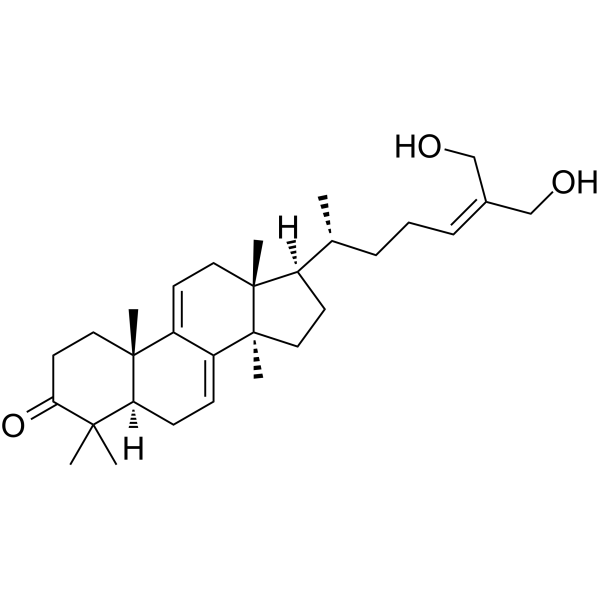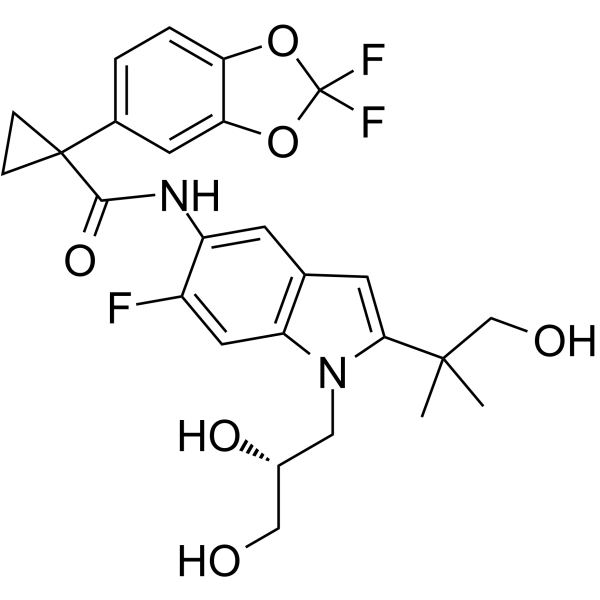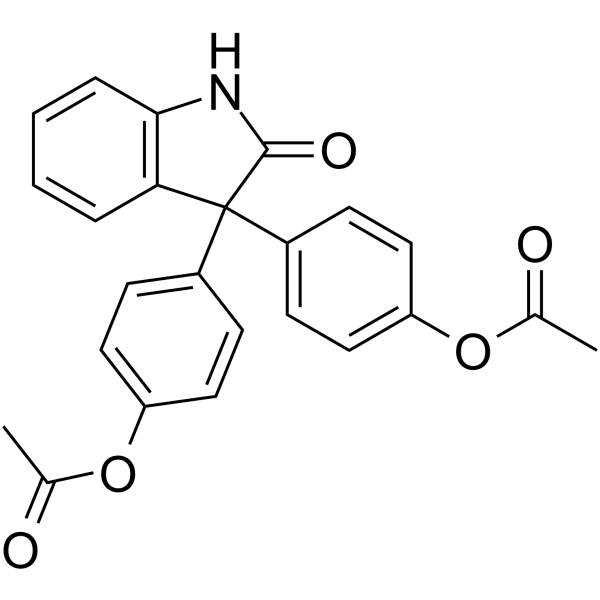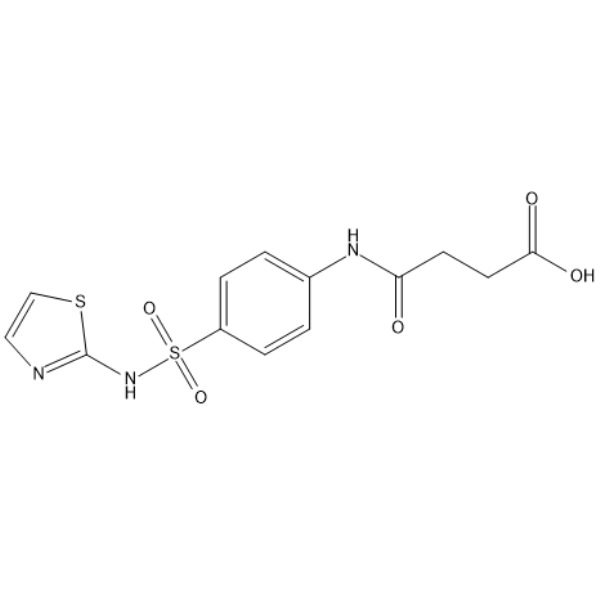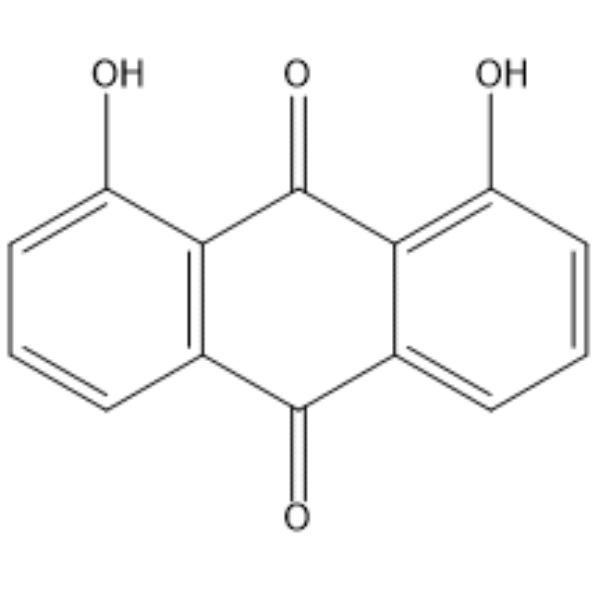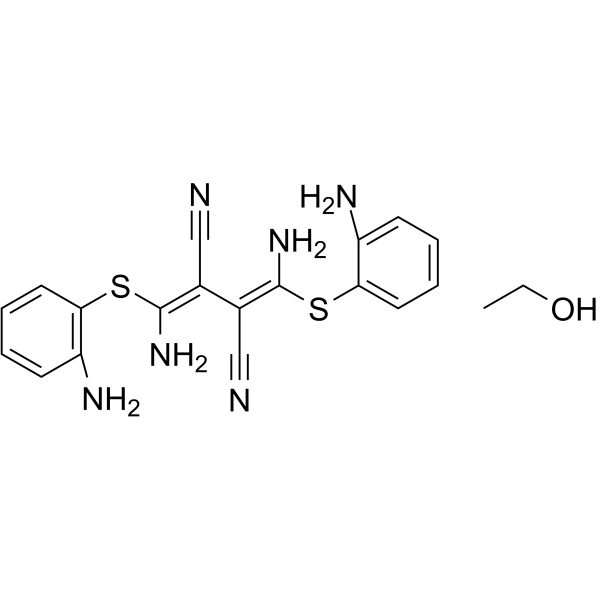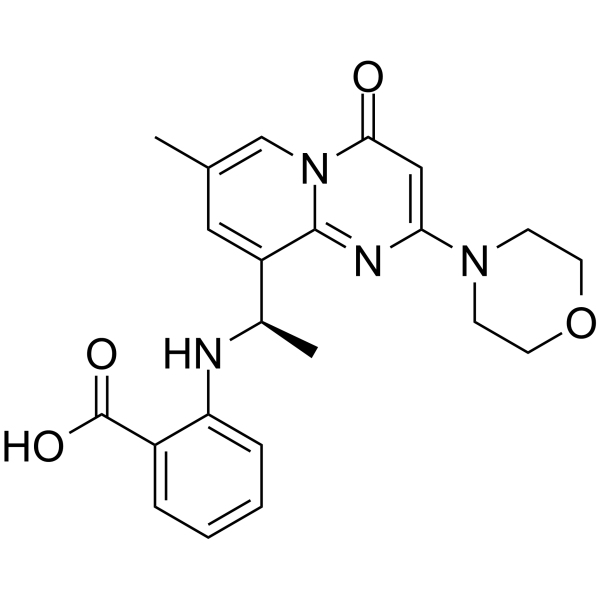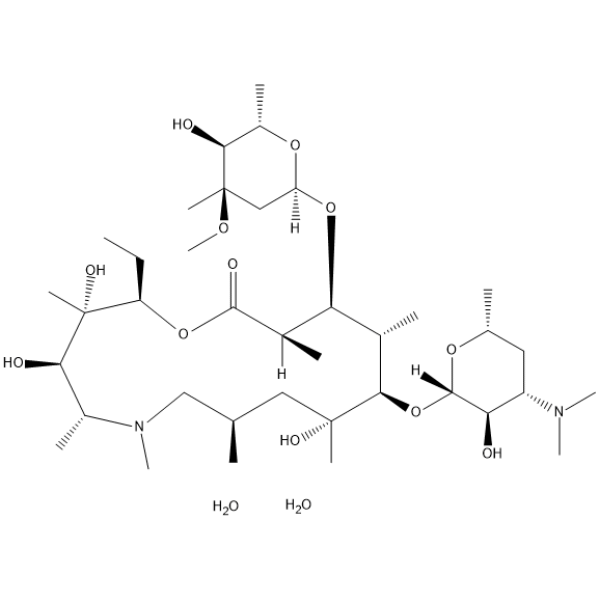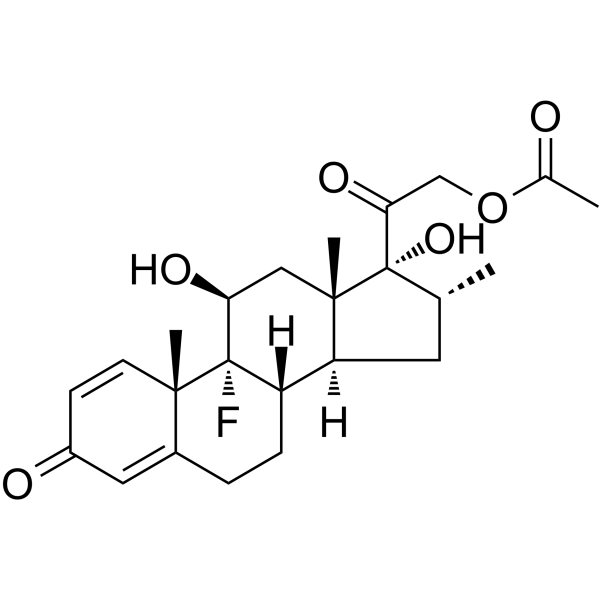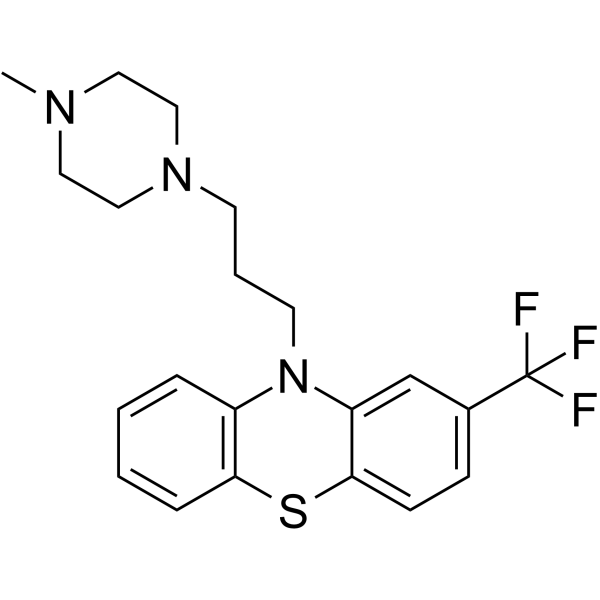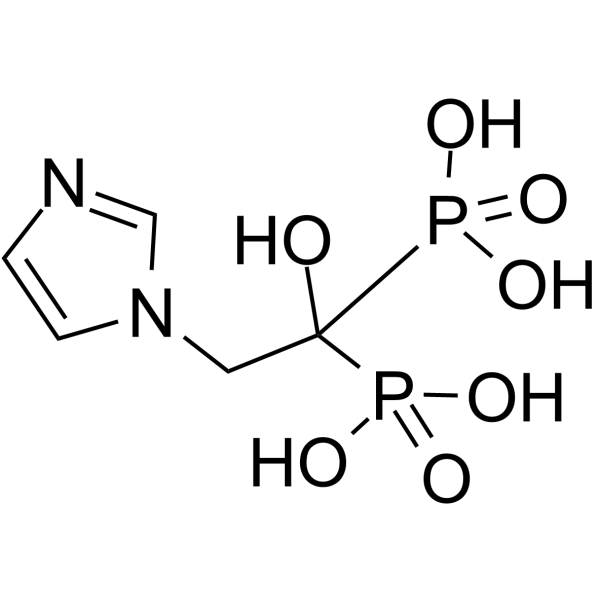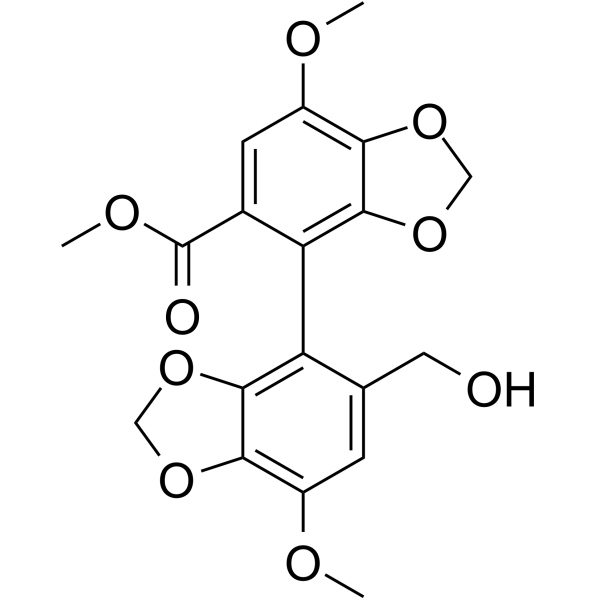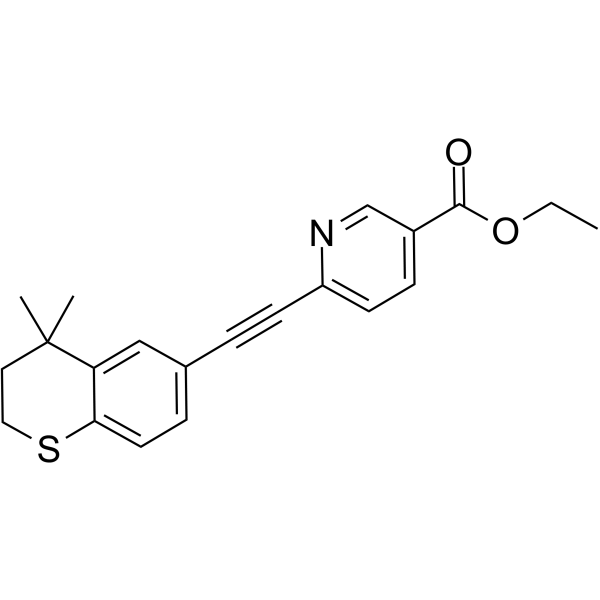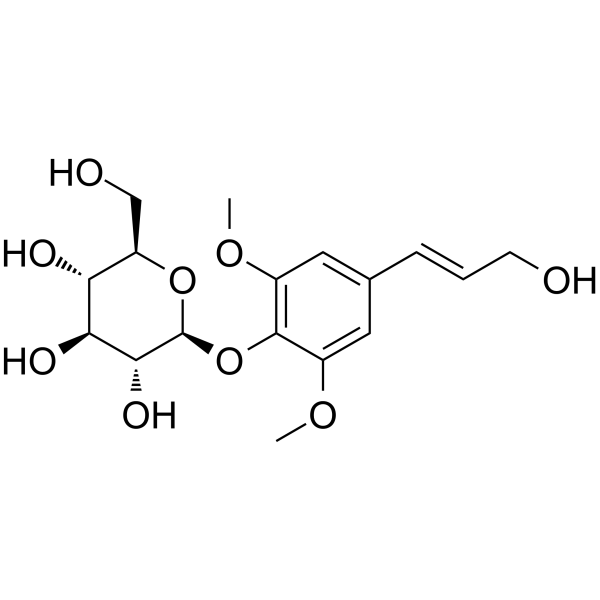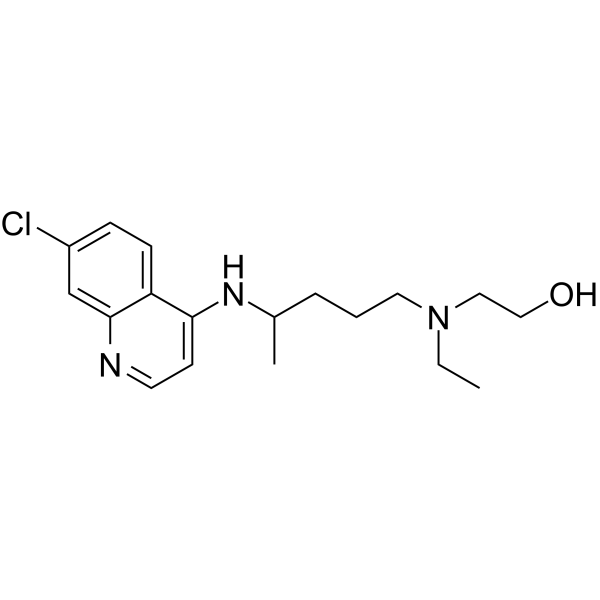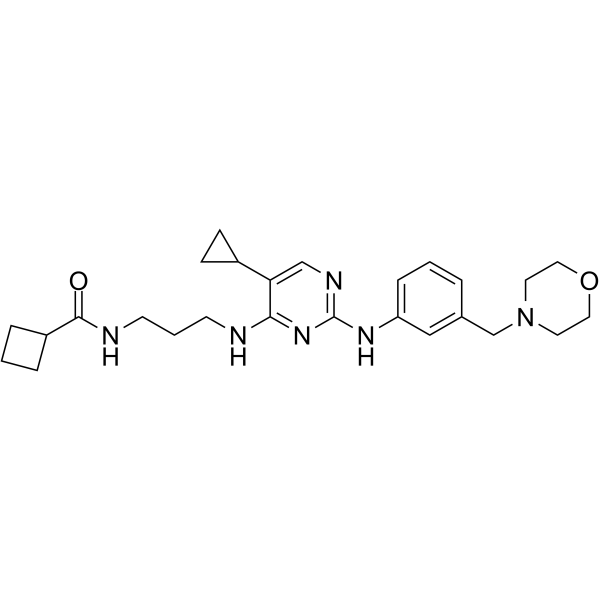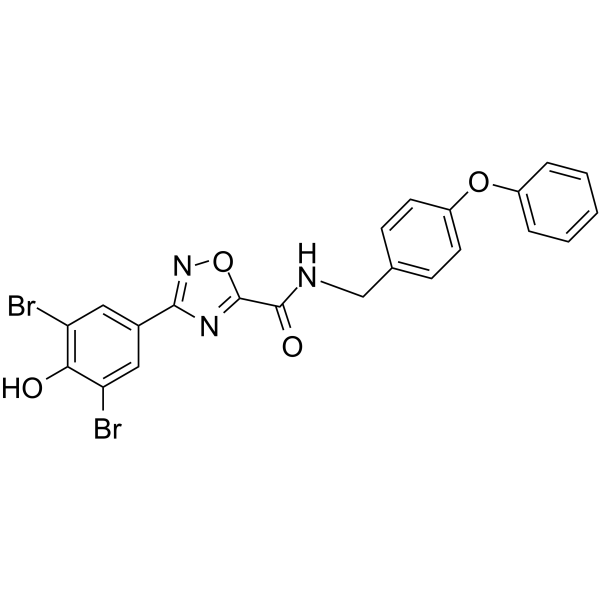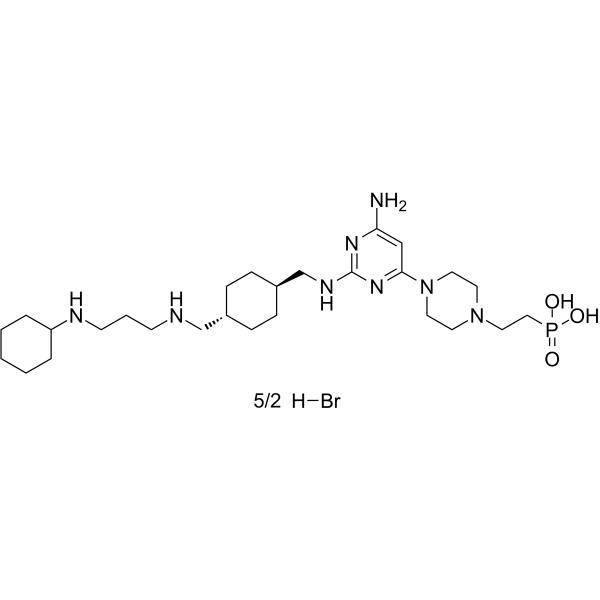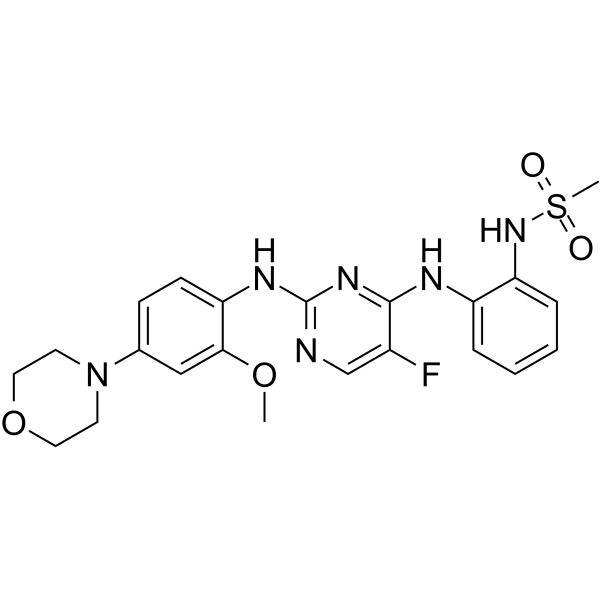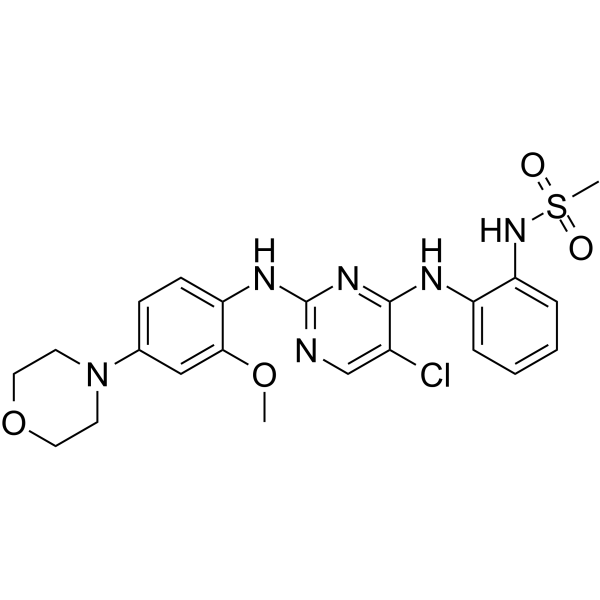|
BP12358
|
Ganoderiol F
|
|
|
|
|
Ganoderiol F has anti-inflammatory, cytotoxic and anti-HIV activity, it inhibits activity of topoisomerases in vitro, and it inhibits human immunodeficiency virus-1 protease with IC(50) values of 20-40 microM. It induced HO-1 expression, activation of the mitogen-activated protein kinase EKR and up-regulation of cyclin-dependent kinase inhibitor p16 and suppressed lipopolysaccharide (LPS)-induced nitric oxide (NO) production.
|
|
BP12359
|
Tezacaftor
|
|
|
|
|
VX-661 is a small molecule that can be used as a corrector of the cystic fibrosis transmembrane conductance regulator (CFTR) gene function.
|
|
BP12360
|
Oxyphenisatin acetate
|
|
|
|
|
Oxyphenisatin acetate inhibits the growth of the breast cancer cell lines MCF7, T47D, HS578T, and MDA-MB-468.
|
|
BP12361
|
Succinylsulfathiazole
|
|
|
|
|
Succinylsulfathiazole is a sulfonamide. An ultra long-acting drug.
|
|
BP12362
|
Danthron
|
|
|
|
|
Danthron is a natural product, regulates glucose, and lipid metabolism by activating AMPK.
|
|
BP12363
|
U0126-EtOH
|
|
|
|
|
U0126-EtOH is a non-ATP competitive specific inhibitor of MEK1/2 (IC50: 0.07/0.06 μM).
|
|
BP12364
|
AZD 6482
|
|
|
|
|
AZD 6482 is a potent and selective p110β inhibitor with IC50 of 0.69 nM and a PI3Kβ inhibitor with IC50 of 10 nM.
|
|
BP12365
|
Azithromycin hydrate
|
|
|
|
|
Azithromycin dihydrate is a semi-synthetic macrolide antibiotic structurally related to ERYTHROMYCIN. It has been used in the treatment of Mycobacterium avium intracellulare infections, toxoplasmosis, and cryptosporidiosis.
|
|
BP12366
|
Dexamethasone acetate
|
|
|
|
|
Dexamethasone Acetate is the acetate salt form of Dexamethasone, a synthetic adrenal corticosteroid with potent anti-inflammatory properties. In addition to binding to specific nuclear steroid receptors, dexamethasone also interferes with NF-kB activation and apoptotic pathways. This agent lacks the salt-retaining properties of other related adrenal hormones.
|
|
BP12367
|
Trifluoperazine
|
|
|
|
|
Trifluoperazine is a Dopamine D2 receptor inhibitor(IC50 : 1.2 nM), and Treatment of schizophrenia.
|
|
BP12368
|
Zoledronic Acid
|
|
|
|
|
Zoledronate is a bisphosphonate. Zometa is used to prevent skeletal fractures in patients with cancers such as multiple myeloma and prostate cancer. It can also be used to treat hypercalcemia of malignancy and can be helpful for treating pain from bone metastases. An annual dose of Zoledronate may also prevent recurring fractures in patients with a previous hip fracture. Zoledronate is a single 5 mg infusion for the treatment of Paget's disease of bone. In 2007, the FDA also approved Reclast for the treatment of postmenopausal osteoporosis.
|
|
BP12369
|
Bicyclol
|
|
|
|
|
Bicyclol(SY 801) is an anti-hepatitis drug. Oral administration of bicyclol normalizes the elevated serum transaminases (ALT, AST) by 50% in chronic viral hepatitis B and C, and also has a certain level of inhibiting HBV and HCV replication. In combination therapy of bicyclol with interferon alpha, lamivudine and adefovir dipivoxil in HBV or HCV, bicyclol may reduce YMDD mutant and side effects and increase the anti-viral efficacy.
|
|
BP12370
|
Tazarotene
|
|
|
|
|
Tazarotene is a synthetic, topical retinoid. Tazarotene induces the expression of tazarotene-induced gene 3 (TIG3), a tumor suppressor gene. In psoriasis, tazarotene normalizes abnormal keratinocyte differentiation and reduces their hyperproliferation.
|
|
BP12371
|
Syringin
|
|
|
|
|
Syringin is a compound with antitumor, antiproliferative, immunomodulatory and platelet aggregation inhibiting effects.
|
|
BP12372
|
Hydroxychloroquine
|
|
|
|
|
Hydroxychloroquine (HCQ) is an alkalinizing lysosomatropic drug that acts by inducing apoptosis of renal cancer cells in vitro and inhibiting TLR7/9. It is a medication used to prevent and treat malaria, and it's also being studied as an experimental treatment for COVID-19.
|
|
BP12373
|
MRT67307
|
|
|
|
|
Through its effects on ULK1 and ULK2, MRT67307 blocks autophagy. MRT67307 prevents the phosphorylation of IRF3 and the production of IFN-β and increases toll-like receptor-induced IL-10 and IL-1ra secretion in macrophages. MRT67307 is a kinase inhibitor that has been shown to inhibit TBK1, MARK1-4, IKKε, and NUAK1 (IC50 values are 19, 27-52, 160, and 230 nM, respectively), the salt-inducible kinases (SIKs; IC50s =250, 67, and 430 nM for SIK1, SIK2, and SIK3, respectively) and ULK1 and ULK2 (IC50s = 45 and 38 nM, respectively).
|
|
BP12374
|
IOWH-032
|
|
|
|
|
IOWH032, a synthetic CFTR inhibitor, has been investigated for the treatment of cholera, diarrhea, and secretory diarrhea.
|
|
BP12375
|
Burixafor hydrobromide
|
|
|
|
|
Burixafor hydrobromide (TG-0054 hydrobromide) is an orally bioavailable and potent CXCR4 antagonist and an anti-angiogenic drug that is of potential value in treating choroid neovascularization.
|
|
BP12376
|
CZC-25146
|
|
|
|
|
CZC-25146 is an effective, specific and metabolically stable LRRK2 inhibitor with IC50 of 4.76/6.87 nM for wild-type LRRK2(Leucine-rich repeat kinase-2) and G2019S LRRK2, respectively.
|
|
BP12377
|
CZC-54252
|
|
|
|
|
CZC-54252 is a potent inhibitor of LRRK2.
|
